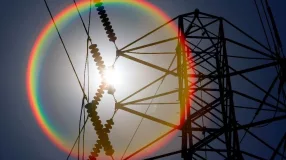By Don Santa, President & CEO, Interstate Natural Gas Association of America
Earlier this month, I participated in a panel hosted by the R Street Institute, a Washington, DC-based think tank, to discuss the history and use of eminent domain as it relates to the construction of critical energy infrastructure, including interstate natural gas pipelines.
It was a thoughtful conversation, which can be viewed in its entirety by clicking here.
By way of background and as a quick refresher, it’s important to keep in mind a few important facts when discussing pipelines and eminent domain. First, think of the interstate natural gas pipeline system as a network of interstate highways – just below the ground. Pipeline companies are like UPS and FedEx in that they provide a transportation solution to shippers but do not own the products they ship.
Just as retailers like Amazon and Walmart need shippers and roads to move goods across the country, energy producers need pipelines to transport and deliver natural gas to consumers and businesses. However, unlike retailers that have options for shipping products (trucks, planes, trains and drones), pipelines are the only means for delivering natural gas safely and reliably to power plants, manufacturers and other end users, like those who use natural gas to heat and cool their homes.
As I outlined at the R Street forum, the history of eminent domain for interstate natural gas pipelines reveals much about why it remains necessary today. Enacted in 1938, the Natural Gas Act was the first instance where the federal government was charged with regulating interstate natural gas infrastructure. Nearly a decade later, the country faced extreme winter natural gas shortages due to the inability to expand natural gas pipeline infrastructure in the face of growing demand. The shortages resulted in thousands of employee layoffs and increased flaring by natural gas producers—wasting the valuable resource.
Congress found that individual states, landowners and the proponents of competing fuels (at that time, the coal industry and the railroads that transported coal) were complicating the construction of interstate pipelines that had been approved by the federal regulator. In order to alleviate the shortage, Congress amended the Natural Gas Act to allow the use of federal eminent domain by pipeline companies with a Federal Energy Regulatory Commission (FERC) certificate of public convenience and necessity.
Our members recognize that with this ability, comes a tremendous amount of responsibility. That’s why our members view eminent domain as an absolute last resort. This is borne out by a recent member survey which found that a judicial determination was required to acquire less than 2 percent of all right of way easements that our members needed to construct their FERC-approved projects.
Whether eminent domain is used or not, open, constructive relationships with landowners are critical to the pipeline operator-landowner partnership. INGAA member companies are firmly committed to leading the industry in building and maintaining strong, positive relationships with landowners impacted by the construction of natural gas pipelines.
INGAA’s members adopted nine commitments to landowners which serve as guideposts for our member companies when engaging with communities. These commitments include mutual respect and trust between the parties, accurate and prompt information, good-faith negotiations, and timely response to issues.
Most importantly, as I highlighted during my remarks, INGAA members are committed to utilizing eminent domain only as a means of last resort. Our members begin every easement negotiation with the expectation that a mutual agreement can be reached, and eminent domain rights will not need to be exercised.
Natural gas will continue to be an integral part of America’s energy mix for decades to come, making construction of natural gas pipeline infrastructure critical for continued economic and environmental progress. Our members are committed to evaluating and improving practices and processes continually in order to maintain strong, positive and fair relationships with landowners and communities that host this critical energy infrastructure.






